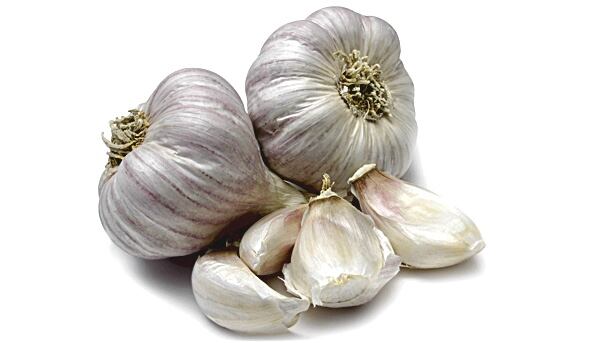According to a study by data analyst Nielsen, 52% of unconnected Chinese shoppers—compared to 55% globally—will use the internet to make purchases in the future.
Nielsen’s survey polled 30,000 online respondents in 60 countries to understand how digital technology would shape the retail landscape of the future.
“The connected commerce era is here,” said Brian Negley, vice-president of Nielsen China.
“Consumers are no longer shopping entirely online or offline; rather, they’re taking a blended approach, using whatever channel best suits their needs. The most successful retailers and manufacturers will be at the intersection of the physical and virtual worlds, leveraging technology to satisfy shoppers however, wherever and whenever they want to shop.”
In conventional, offline retail, a subtle shift has become apparent, Nielsen has also found. This reflects a willingness among rural consumers to spend on groceries that has been bolstering the country’s overall confidence. Willingness to spend among these consumers hit 47% in the second quarter, up 10 percentage points from previous quarters.
The uptick resulted in a two-point rise in consumer confidence among rural-dwelling consumers.
The shift in the rural portions of the country stands in notable contrast to confidence in Tier 1 cities, which dropped one index point since the first-quarter of this year. Comparatively, the consumer confidence index levels for Tier 2, 3 and 4 cities remained steady.
Notably, Nielsen found that when consumers were asked why they believed now was the time to buy what they needed, 25% of those in rural areas cited “convenience of shopping” as the strongest factor for their behaviour.
Rural consumers also stressed that online shopping channels had been making shopping dramatically more convenient. Shopping online also helps rural consumers purchase items they don’t have access to otherwise.
With the help of agreements between manufacturers and local governments, e-retailers have penetrated almost 20% of China’s rural population. While this level of online shopping availability lags the national average of 42%, rural consumers say they are spending more online than the national average.
Rural online spending growth stood at 64% in the second quarter, markedly higher than the national average of 53%.
Trilateral co-operation talks make progress after last round stalled
The agriculture ministers of China, Japan and South Korea have met for the first time in more than three years to agree to ways they can increase co-operation and stabilise their mutual food supply.

In a joint statement following a two-day summit in Tokyo, the ministers agreed to increase their respective food production levels. They hinted that they would also revisit a three-way free-trade agreement that stalled in 2012 due to disputes over territorial disputes and historical differences.
In a bid to continue the progress they made at last weekend’s meeting, the three countries have agreed to continue negotiations at a summit in China, where they would flesh out the measures stipulated in their joint statement.
The three ministers also signed a memorandum of cooperation to respond to transboundary animal diseases and counter infectious diseases affecting livestock through joint research on migratory birds and movements of people. This follows a series of bird flu and foot-and-mouth disease outbreaks in East Asia.
Agriculture minister Yoshimasa Hayashi said the meeting was able to produce “major results,” pointing to the memorandum on animal disease response and the establishment of a working-level meeting.
His South Korean counterpart, Lee Dong-phil, said the trilateral co-operation had become more concrete than the first meeting in April 2012, while Chinese vice farm minister Chen Xiaohua said convening the meeting itself was “extremely significant.”
In bilateral sessions held on the meeting’s sidelines, Japan urged the other two countries to lift bans on imports of Japanese agricultural and marine products stemming from the 2011 Fukushima nuclear crisis. Japanese officials said there was no progress on this front.
Barentz to expand into China through acquisition
Dutch ingredients and nutraceuticals major Barentz has acquired the ingredients distributor New Skyport in a bid to expand its presence in China.

The move comes after a recent capital injection to accelerate growth. This expansion began soon after it secured financing when Barentz acquired PT Astabumi Ciptadaya, a leading food and nutrition ingredients distributor in Indonesia.
Now the company sees its New Skyport acquisition as a “logical step” in a market where demand for specialty food ingredients and sophisticated food and nutrition products is growing.
New Skyport, which is headquartered in Shanghai and has a number of offices along China’s eastern seaboard, is already the main distributor for Roquette Freres products in the country. Hidde van der Wal (pictured), chief executive of Barentz International, said the deal is bound to accelerate the company’s growth.
“Owning a distribution business in China has long been part of our expansion plan,” said Van der Wal.
“Being close to ports where our ingredients come in from Europe will be an advantage for our customers, who can be served from our different warehouses in short lead times.
“We intend to also expand our supplier base in China and add some of the principals we have been working with in Europe, so we can serve our customers in China even better.”
Jinrong Huang, managing director of New Skyport, said the six cities the company operates in have a combined population of 100 million people, which is already larger than any single European market.
“Barentz, with their expertise of food applications and access to ingredients from reputable European and American suppliers, can help local Chinese producers increase the quality of their products, enabling them to grow their local business,” Huang added.
Barentz will take over the management of the New Skyport business over the next couple of months and will operate as Barentz (Shanghai) Trading Company Co Ltd. Dongmei Chen, who works for Barentz in Germany, will lead operations in China
Poor economic outlook hits Chinese beef industry
The devalued yuan has made it more expensive for companies to import beef into China and Hong Kong—the largest importers of beef globally.

According to Mintec, the commodities research analysts, Chinese beef prices have increased by 7% since June, when the Shanghai stock exchange fell for the first time in eight months due to low economic growth forecasts.
The weak Yuan, which was devalued in August, has made the import of beef more expensive, and this increase in cost, along with seasonal declines in production, has led to prices increasing.
Australia and Brazil, the main beef exporters to China, are both heavily reliant on Chinese demand. Beef price are currently up 2% year on year.
As importing beef becomes more expensive, demand is likely to fall with consumers turning to cheaper alternatives such as chicken, Mintec predicts.
Garlic prices from China on the rise
Also increasing are prices for garlic from China, the major producer of the root, according to Mintec. The upwards trend has continued since 2014, up 36% year on year, due to reduced planted area for 2015.

This is as a result of low market prices during the 2013 crop, which was caused by a decline in demand. Chinese garlic production in 2015 is projected to be lower by 10%, reaching 0.3m tonnes when compared to last year.
Lower acreage is expected this year for the major growing regions in China, with Jinxiang seeing a 15% reduction in acreage, reaching 35,330ha compared to 41,600ha in 2014.
In addition, adverse weather conditions that occurred in 2014 during harvest has also contributed to the rise in prices.
